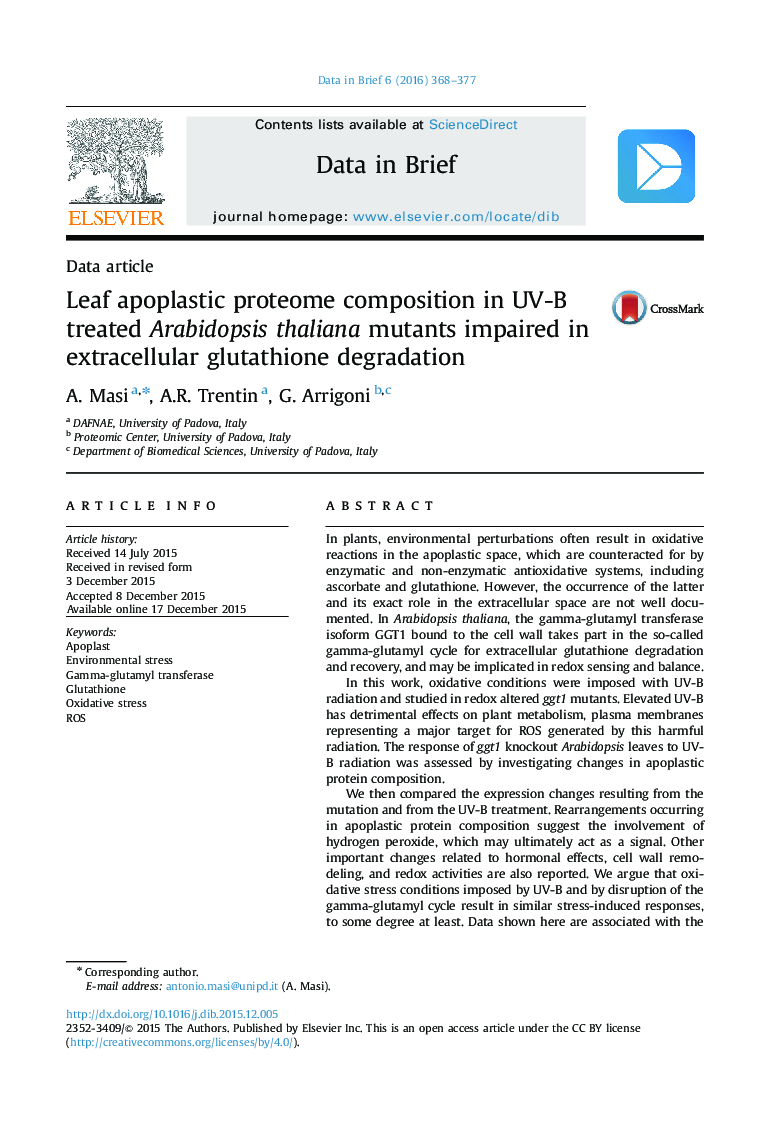| کد مقاله | کد نشریه | سال انتشار | مقاله انگلیسی | نسخه تمام متن |
|---|---|---|---|---|
| 174986 | 458901 | 2016 | 10 صفحه PDF | دانلود رایگان |

In plants, environmental perturbations often result in oxidative reactions in the apoplastic space, which are counteracted for by enzymatic and non-enzymatic antioxidative systems, including ascorbate and glutathione. However, the occurrence of the latter and its exact role in the extracellular space are not well documented. In Arabidopsis thaliana, the gamma-glutamyl transferase isoform GGT1 bound to the cell wall takes part in the so-called gamma-glutamyl cycle for extracellular glutathione degradation and recovery, and may be implicated in redox sensing and balance.In this work, oxidative conditions were imposed with UV-B radiation and studied in redox altered ggt1 mutants. Elevated UV-B has detrimental effects on plant metabolism, plasma membranes representing a major target for ROS generated by this harmful radiation. The response of ggt1 knockout Arabidopsis leaves to UV-B radiation was assessed by investigating changes in apoplastic protein composition.We then compared the expression changes resulting from the mutation and from the UV-B treatment. Rearrangements occurring in apoplastic protein composition suggest the involvement of hydrogen peroxide, which may ultimately act as a signal. Other important changes related to hormonal effects, cell wall remodeling, and redox activities are also reported. We argue that oxidative stress conditions imposed by UV-B and by disruption of the gamma-glutamyl cycle result in similar stress-induced responses, to some degree at least. Data shown here are associated with the article from Trentin et al. (2015) [1]; protein data have been deposited to the PRIDE database (Vizcaíno et al., 2014) [2] with identifier http://www.ebi.ac.uk/pride/archive/projects/PXD001807.
Journal: Data in Brief - Volume 6, March 2016, Pages 368–377